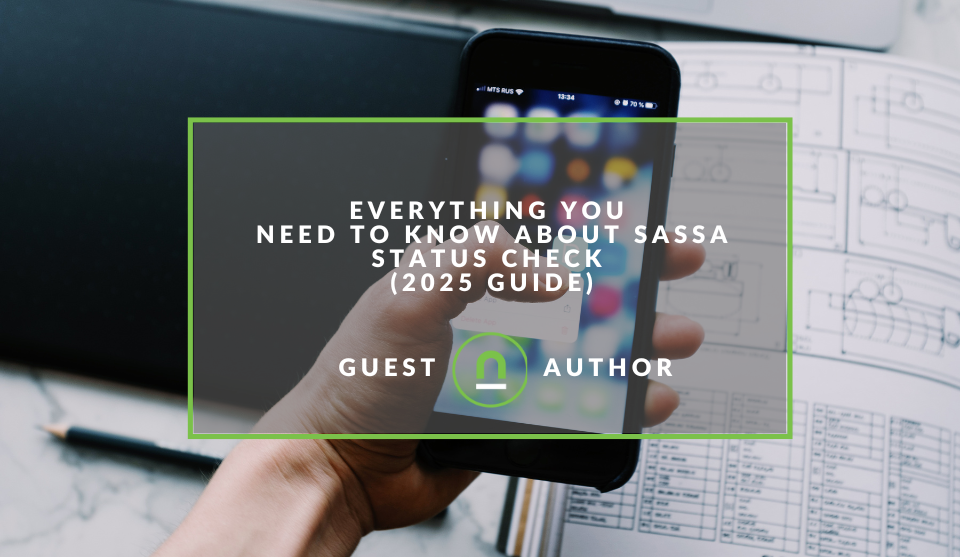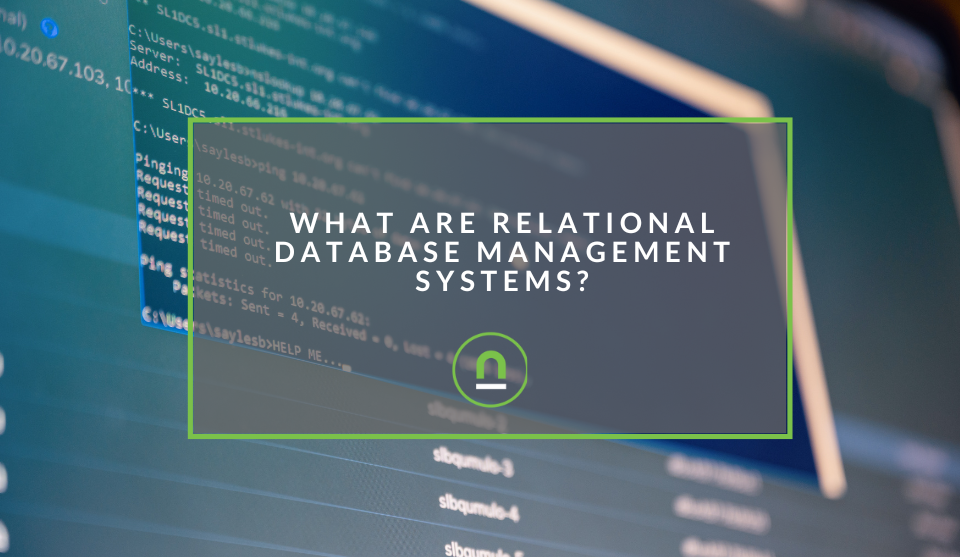Recent posts

Money Talks
Everything You Need to Know About SASSA Status Check
13 April 2025

Mind, Body & Soul
The Genetic Diversity of Cannabis Seeds
12 April 2025

Money Talks
How Small Businesses Can Leverage Blockchain Technology
02 April 2025

Industry Experts
Mastering Personalization in Digital Marketing
31 March 2025
Popular posts
Extravaganza
Trending Music Hashtags To Get Your Posts Noticed
24 August 2018
Geek Chic
How To Fix iPhone/iPad Only Charging In Certain Positions
05 July 2020
Extravaganza
Trending Wedding Hashtags To Get Your Posts Noticed
18 September 2018
Money Talks
How To Find Coupons & Vouchers Online In South Africa
28 March 2019
What Are Relational Database Management Systems?
28 March 2025 | 1 comments | Posted by Che Kohler in nichemarket Advice
In a modern economy like ours, where more commerce is conducted online, data has become a commodity like oil or soybeans. The more data a company generates on their customers, the easier it becomes to reach them, educate them, convert them, and improve your product and service.
The need to collect and store data is obvious, but where it becomes complicated is when you're managing large datasets with multiple entry points and need to blend sources and process information into actionable insights that drive business decisions.
As our data storage requirements become more complex, modern data storage has had to adapt using some interesting techniques.
The Foundation of Modern Data Storage
Trusted company databases of all sizes need robust systems to store, organize, and retrieve their valuable information. At the heart of many successful data strategies lies the relational database management system (RDBMS).
This powerful technology has remained the backbone of data management for decades, even as newer alternatives have emerged.
What Is a Relational Database Management System?
A relational database management system (RDBMS) is software that stores data in a structured format using tables, rows, and columns. The "relational" aspect comes from the ability to create relationships between these tables, allowing for complex data structures that mirror real-world relationships.
The core components of an RDBMS include:
- Tables: The primary objects that store data in rows and columns
- Rows: Individual records within a table
- Columns: Specific attributes or data points (each with a defined data type)
- Keys: Special fields that identify records and establish relationships
- Schema: The overall structure that defines tables, fields, relationships, and constraints
The RDBMS manages all of these components, providing tools for creating, reading, updating, and deleting data (often called CRUD operations) while maintaining data integrity and security.
The Historical Foundation
The relational database model was first proposed by IBM researcher Edgar F. Codd in 1970. His groundbreaking paper, "A Relational Model of Data for Large Shared Data Banks," introduced concepts that revolutionized data management.
Before this, data was typically stored in hierarchical or network databases that were inflexible and required complex navigation.
Codd's model introduced several key innovations:
- Data organised in tables (relations) with rows and columns
- Use of primary and foreign keys to establish relationships
- Normalization principles to eliminate redundancy
- Separation of logical data structure from physical storage details
- Declarative query language (which later became SQL)
Core Principles of the Relational Model
In the relational model, data is organised in tables (or "relations"). Each table represents a specific entity or concept. For example, a business might have tables for customers, orders, products, and employees.
Each table consists of:
- Rows (tuples): Individual instances or records
- Columns (attributes): Specific properties of the entity
Keys for Identification and Relationships
Keys play a crucial role in relational databases:
- Primary Keys: Uniquely identify each record in a table (e.g., CustomerID, OrderID)
- Foreign Keys: Reference primary keys in other tables to establish relationships
- Composite Keys: Multiple columns that together form a unique identifier
- Candidate Keys: Columns that could potentially serve as primary keys
Relationships Between Tables
The true power of relational databases comes from the ability to establish relationships between tables:
- One-to-One: Each record in Table A relates to exactly one record in Table B
- One-to-Many: One record in Table A relates to multiple records in Table B
- Many-to-Many: Multiple records in Table A relate to multiple records in Table B (typically implemented using a junction table)
Data Integrity Constraints
RDBMSs enforce various rules to maintain data integrity:
- Entity Integrity: Ensures each row has a unique identifier (primary key)
- Referential Integrity: Ensures relationships between tables remain consistent
- Domain Integrity: Ensures data values meet defined criteria (data types, ranges, etc.)
- User-Defined Integrity: Custom business rules implemented as constraints
SQL: The Language of Relational Databases
Structured Query Language (SQL) is the standard language for interacting with relational databases. SQL provides commands for:
- Data Definition Language (DDL): CREATE, ALTER, DROP tables and other objects
- Data Manipulation Language (DML): SELECT, INSERT, UPDATE, DELETE data
- Data Control Language (DCL): GRANT and REVOKE permissions
- Transaction Control: COMMIT, ROLLBACK operations
A basic SQL query might look like:
SELECT customers.name, orders.order_date, products.product_name FROM customers
JOIN orders ON customers.customer_id = orders.customer_id
JOIN order_items ON orders.order_id = order_items.order_id
JOIN products ON order_items.product_id = products.product_id WHERE orders.order_date > '2023-01-01'
ORDER BY orders.order_date DESC;
This query retrieves customer names, order dates, and product names for all orders placed after January 1, 2023, demonstrating how SQL can express complex relationships and conditions.
Normalisation: Organising Data Efficiently
Normalisation is a systematic process of organizing data to minimize redundancy and dependency.
The main goals are to:
- Eliminate redundant data (avoid storing the same information in multiple places)
- Ensure data dependencies make sense (values depend only on keys)
- Prepare data for efficient queries
Normalisation typically follows several forms:
- First Normal Form (1NF): Eliminate repeating groups and ensure atomic values
- Second Normal Form (2NF): Remove partial dependencies on a composite key
- Third Normal Form (3NF): Remove transitive dependencies
- Boyce-Codd Normal Form (BCNF): Address anomalies in functional dependencies
- Fourth Normal Form (4NF) and Fifth Normal Form (5NF): Handle more complex dependencies
While higher normalisation forms theoretically provide better data integrity, most practical applications aim for 3NF as a balance between integrity and performance.
Transactions and ACID Properties
A transaction is a sequence of operations performed as a single logical unit of work.
The ACID properties ensure reliable transaction processing:
- Atomicity: All operations in a transaction succeed or fail together
- Consistency: Transactions move the database from one valid state to another
- Isolation: Concurrent transactions don't interfere with each other
- Durability: Completed transactions persist even after system failures
These properties are critical for applications where data integrity is paramount, such as banking, e-commerce, and inventory management.
Popular RDBMS Platforms
Several RDBMS platforms dominate the market today:
- Oracle Database: Enterprise-grade solution with comprehensive features
- Microsoft SQL Server: Tightly integrated with Microsoft's ecosystem
- MySQL: Popular open-source option known for web application compatibility
- PostgreSQL: Feature-rich open-source system with advanced capabilities
- SQLite: Lightweight, file-based database for embedded applications
- MariaDB: MySQL fork with enhanced features and community-driven development Each platform has unique strengths, but all implement the core relational principles.
Benefits of Using an RDBMS
Relational database systems offer numerous advantages:
- Data Integrity: Constraints and validation rules ensure accurate data
- Data Security: Granular permission controls protect sensitive information
- Flexibility: Can adapt to changing business requirements
- Standardisation: Common SQL interface across platforms
- Mature Ecosystem: Abundant tools, documentation, and skilled professionals
- Scalability: Can handle growing data volumes with proper design
- ACID Compliance: Reliable transaction processing
Challenges and Limitations
Despite their strengths, relational databases face certain challenges:
- Schema Rigidity: Structure must be defined before data insertion
- Scaling Complexity: Horizontal scaling can be challenging
- Performance Overhead: Joins and complex queries can impact performance
- Schema Changes: Altering existing schemas can be disruptive
- Handling Unstructured Data: Not ideal for documents, multimedia, etc.
The Rise of NoSQL and NewSQL Alternatives
In response to challenges with traditional RDBMSs, alternative database models have emerged:
- NoSQL Databases: Document, key-value, column-family, and graph databases that offer schema flexibility and horizontal scaling
- NewSQL Databases: Systems that maintain ACID properties while improving scalability
However, rather than replacing relational databases, these alternatives have created a "polyglot persistence" landscape where organizations choose the right database type for specific use cases.
Best Practices for RDBMS Implementation
For successful implementation of a relational database system:
- Thorough Data Modeling: Invest time in proper table design and relationships
- Appropriate Normalisation: Balance between integrity and performance
- Index Strategically: Create indexes for frequently queried columns
- Optimise Queries: Write efficient SQL and monitor query performance
- Implement Security: Use roles, permissions, and encryption
- Regular Maintenance: Schedule backups, updates, and performance tuning
- Documentation: Maintain comprehensive schema documentation
Keep Your Database in Order
Relational database management systems continue to be the foundation of data storage for most organisations. Their proven reliability, rich feature set, and mature ecosystem make them an excellent choice for structured data storage needs.
While new database technologies have expanded the options available, understanding RDBMS principles remains essential for anyone working with data systems.
By mastering the fundamentals of relational database design and management, organisations can ensure their data is stored efficiently, accessed securely, and remains a valuable asset for decision-making and operations.
Are you looking to promote your business?
Businesses can create their free business listing on nichemarket. The more information you provide about your business, the easier it will be for your customers to find you online.
Registering with nichemarket is easy; all you will need to do is head over to our sign-up form and follow the instructions. If you require a more detailed guide on how to create your profile or your listing, then we highly recommend you check out the following articles.
Recommended reading
If you enjoyed this post and have time to spare why not check out these related posts and dive deeper down the rabbit hole that is big data.
- Upcoming Big Data Database Management Practices DBAs Need to be Prepared for
- The 7 Biggest Data Trends That Will Improve Your Business Strategy
- Why people analytics is the number 1 game changer in Tech
Tags: Database, Big Data, Data Analytics
You might also like
Everything You Need to Know About SASSA Status Check
13 April 2025
Posted by Azhar Khanzada in Money Talks
A guide for 2025 for anyone looking to apply for a SASSA grant or would like to keep up to date with the status of your grant from application to red...
Read moreMastering Personalization in Digital Marketing
31 March 2025
Posted by Željka Ristic in Industry Experts
We look at the best content marketing tools to boost engagement and growth and build sustainable marketing campaigns that drive users to take action
Read more{{comment.sUserName}}
{{comment.iDayLastEdit}} day ago
{{comment.iDayLastEdit}} days ago
 {{blogcategory.sCategoryName}}
{{blogcategory.sCategoryName}}
